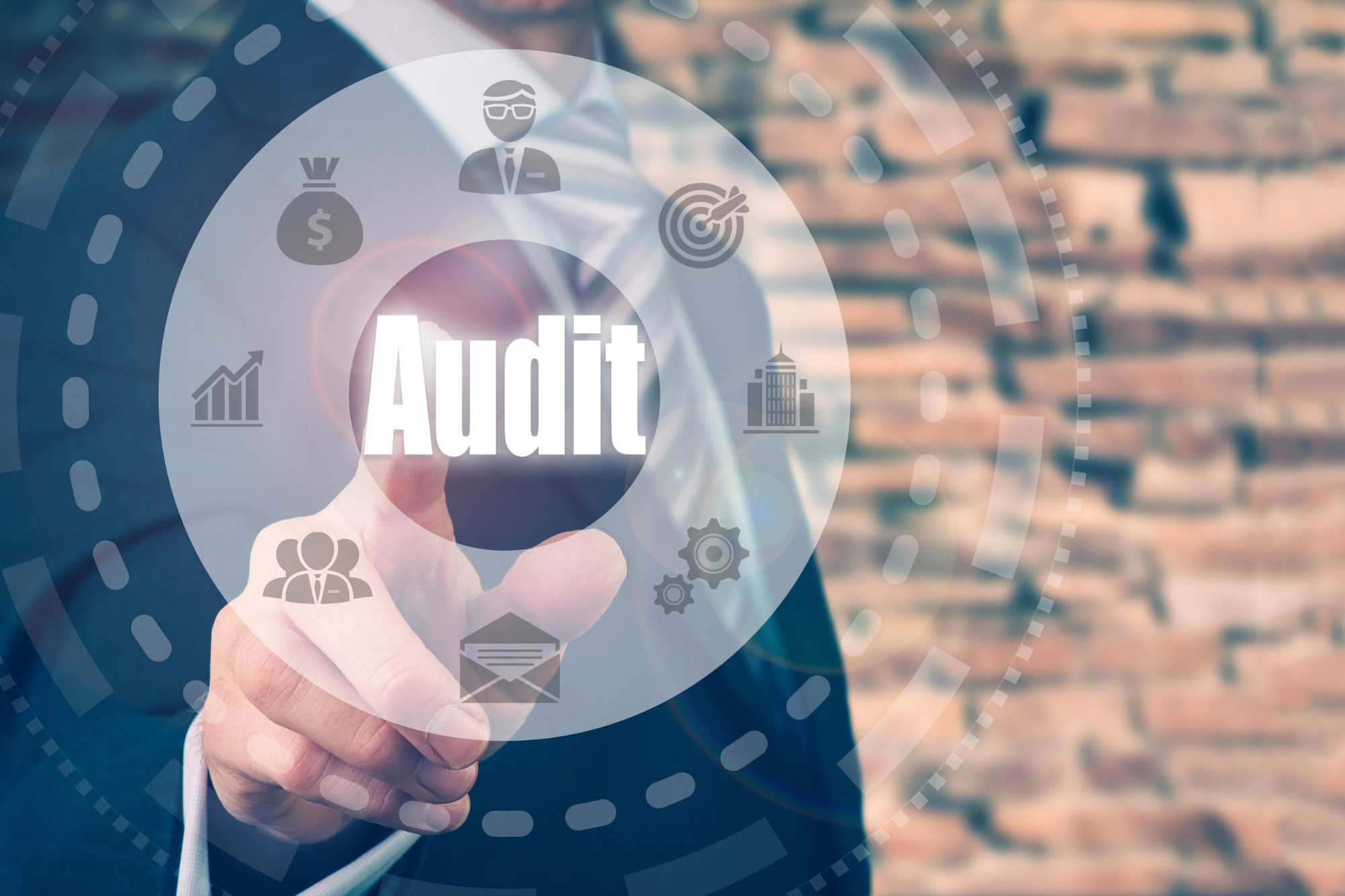
Why does your company need an Audit?
In today’s dynamic business environment, an audit has become an integral tool for any company striving for continuous improvement. Although the term “audit” might sound a bit unsettling, it is, in fact, an incredibly valuable and constructive process. In this article, we will learn why it is essential for the development and stability of every organization. We will analyze the benefits that conducting an audit brings and discuss key areas it should focus on in the context of various aspects of a business’s operations.
An audit provides insights into the current state and helps identify areas for improvement while providing guidance for strategic actions. Today, many companies, regardless of size or industry, see audits as valuable tools that lead to sustainable growth and aid in achieving their goals.
Table of contents
- Introduction to auditing – what is it and why is it worth it?
- Internal audit and its role
- How does auditing contribute to process improvement?
- Summary
1. Introduction to auditing – what is it and why is it worth it?
This is a process of thorough analysis and evaluation of the current state of functioning areas within the company. Auditors conduct a detailed observation of processes, workstations, measure lead time, assess the efficiency and effectiveness of processes and communication within the enterprise, in order to estimate its potential.
An audit is like a magnifying glass that reveals imperfections and potential issues. It’s also like a magnifying lens that identifies best practices and added value in the observed flows.
Through the analysis of processes, efficiency, and the quality of products or services, areas in need of improvement can be identified. As a result, the company can direct its efforts towards eliminating current problems and avoiding their recurrence in the future.

During the audit process, areas for improvement are identified, and these recommendations for enhancements are presented in the final report. The report also includes the costs of implementing the suggested optimizations, calculation of return on investment, and an estimation of the time required for implementing the changes. It defines the team that should be involved in the improvement work as well. The report provides a solid foundation for initiating the company’s continuous improvement process.
The process consists of four stages:
- Observation and detailed analysis of the current state of the organization using one of the audit tools, such as “a day in the life” photos of employees or analysis of machine downtime.
- Assessment of the current state and estimation of potential.
- Presentation of findings and recommendations in the form of a final report.
- Creation of a plan, budget, and implementation team.
What’s worth Auditing:
- Technological Process
- Communication Process
- Planning Process
- Sales Process
- Material Flow
- Quality Maintenance Process
- Organizational Structure
- Onboarding Process
- Maintenance Process
- Fulfillment Process
- Logistic Processes
Conducting an audit provides clear and distinct guidelines necessary for effective optimization of areas within the company:
- An independent and objective assessment of the current state of the company derived from the provided audit report.
- A realistic and practical action plan outlining strategic objectives, priorities, cost estimates, and implementation timelines.
- Identification of the company’s development potential with specific recommendations for actions.
- Calculation of investment viability by estimating Return on Investment (ROI).
2. Internal audit and its role
Internal auditing allows for the identification of areas where improving operations is a component of enhancing the overall functioning of the organization. To achieve this, process monitoring is employed, goals for quality are established, and the effects of operations are analyzed.
Process risk analysis enables the identification of all points within the company’s processes that could potentially generate problems. This has enabled the planning of actions to minimize threats, which is a form of preventive measures.
Audits can be divided into several categories, but from the perspective of a given organization, the most important division is:
- Internal audits, known as first-party audits,
- External audits, known as second-party audits,
- Audits by certifying bodies, referred to as third-party audits.
In a practical dimension, internal audits should be treated as fundamental.
Why? These audits are paramount in the system improvement process. Each audit does not involve examining everything but rather selected samples.
A certain small area is subjected to analysis, such as reviewing selected documents, and based on this, the overall state of the specific area is evaluated. Therefore, not finding discrepancies during an audit does not necessarily mean they do not exist, just as identifying a discrepancy does not necessarily invalidate all actions. However, it is an important indicator that leads to further analysis. In practice, the more conscientiously an organization approaches the implementation of internal audits, the more areas requiring improvement it recognizes, and, importantly, implements corrective actions. The more certainty there is that audits conducted by external entities will also demonstrate compliance with requirements.
3. How does auditing contribute to process improvement?
To ensure that an Audit doesn’t carry negative connotations as mere control and that participants in the examined area don’t feel pressure, stress, and threats, effective communication prior to the audit is crucial.
It’s important to raise awareness among both management and employees about the purpose of the audit. Emphasize that the goal is to find areas for achieving better results, to gain greater operational and financial flexibility, and to avoid wasting time on non-value-added activities.
Objectivity, independence, and credibility – all of this depends on the auditor. The success of the audit process, as well as its interactive nature, mutual understanding, and achievement of set goals, hinges on the auditor’s predispositions and skills.
Opting for an external company might be the best solution, as it provides an independent, expert perspective and an objective assessment of the audited company’s situation.
Ensuring that employees within the organization understand the goals and essence of the audit should help eliminate resistance and make the audit a process aimed at improving the company.
Here are several ways audits impact the improvement of operational processes:
- Identification of problems and areas for improvement: Conducting an audit allows for an in-depth analysis of processes, identification of imperfections, and areas in need of optimization. This makes it possible to pinpoint specific areas that hinder the fluidity and efficiency of the company’s operations.
- Detailed analysis of process steps: During an audit, processes are analyzed step by step, enabling the understanding of which elements are redundant, duplicative, or inefficient. Identifying these areas allows for their elimination or modification, leading to shorter process durations.
- Application of LEAN principles: Audits provide an ideal starting point for implementing Lean philosophy, which aims to eliminate waste in processes. Audit analysis can uncover unnecessary stages, excessive inventory, or excessive work, aligning with the goals of cost savings and efficiency.
- Adopting the customer perspective: Audits help view processes from the customer or user perspective. This enables the identification of areas important to recipients that might require improvement to better meet their needs.
- Monitoring performance indicators: Audits often involve assessing process performance indicators. Comparing these indicators with expectations and standards helps identify areas where efficiency can be enhanced.
- Innovative solutions: Audit analysis can lead to discovering new, innovative ways of conducting activities. Identifying problems can stimulate team creativity, generating novel ideas for more effective task execution.
- Knowledge sharing: During audits, employees often share their knowledge and experience regarding processes. This can lead to identifying best practices and learning opportunities from colleagues, expediting change implementation.
As a result, audits provide precise data essential for comprehending existing issues and effectively optimizing processes. This helps the company adapt to changing market conditions, operate more efficiently, and compete in a dynamic business environment.

4. Summary
In the light of contemporary challenges and competitiveness, an audit emerges as an indispensable tool for companies aiming to achieve success and maintain stability. In this article, we’ve examined why conducting an audit is essential for the development of every organization.
An audit, although it might seem somewhat unsettling at times, is a pivotal process that brings forth numerous benefits. Through it, companies can gain a better understanding of their current state, identifying areas for improvement as well as potential for growth. Analyzing processes and compliance with regulations allows for directing actions in the right directions, ultimately impacting efficiency and cost savings. Furthermore, an audit builds trust among customers, investors, and partners, which is crucial for the long-term success of a company.

